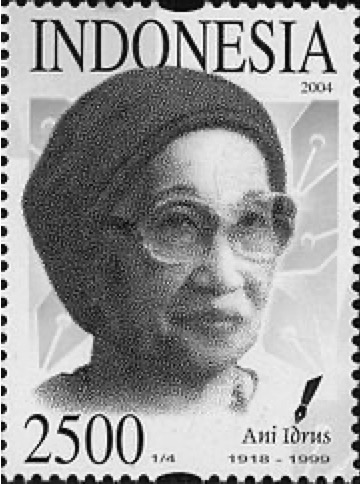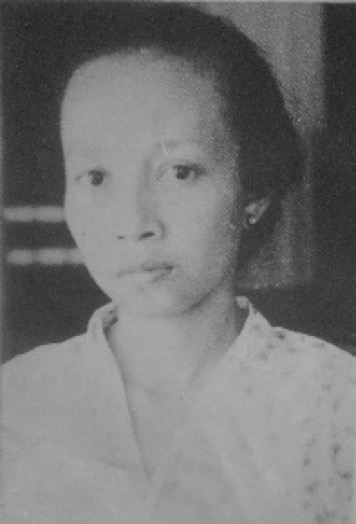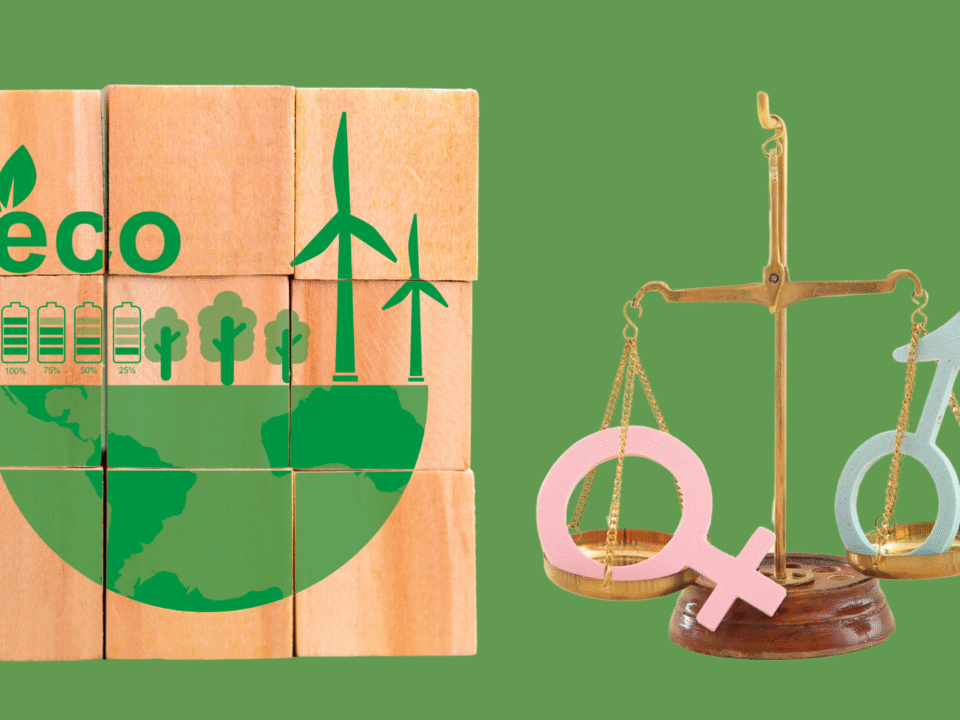
Question and answer; How Business Contribution on Achieving Sustainable Development Goals No. 5?
December 24, 2023
Impostor Syndrome – Feeling Insecure due to Gender Social Norms
December 24, 2023Indonesia has several female journalist figures who fought for women’s rights before Indonesia’s independence. At that time, Indonesia was heavily associated with a patriarchal system, a social system that placed men as the ultimate power holders in both the public and domestic realm, while women were idealized as graceful and submissive figures.
The struggle for women’s rights through the world of journalism was started by Roehana Koeddoes in the early 1900s.
Roehana Koeddoes

The first female journalist in Indonesia and one of Indonesia’s activists who made many contributions in the fields of education, journalism, and politics.
Roehana’s journalism career began in 1908, when she was a writer contributor to Poetri Hindia, the first women’s newspaper in Batavia. Four years later, in 1912, Roehana published the first women’s newspaper in Minangkabau, Soenting Melajoe. A newspaper whose editor in chief, editors, and writers were all women.
As editor in chief, Roehana Koeddoes’ attitude could be seen clearly through the policy direction which always leads to the articulation of the struggle for women’s rights.
For her participation in fighting for women’s rights in the fields of journalism, education, and politics, Roehana was awarded as a Pioneer of the Indonesian Press by the Minister of Information, Harmoko, on February 9, 1987.
On September 8, 2019, Roehana Koeddoes was declared as a National Hero by President Joko Widodo.
Ani Idrus

One of the most influential female journalists in the era of the national movement of Indonesia.
Ani Idrus started to like writing and submitting articles to several newspapers or magazines in 1930. Three years later, Ani Idrus began to do professional journalistic work. She helped the Politik Penyebar Magazine, which was under the publication of the Sinar Deli newspaper, one of the largest newspapers in North Sumatra at that time.
In 1938, Ani Idrus and her husband published a magazine named Seruan Kita, but this media did not last long. However, Ani Idrus’ spirit did not just disappear. In 1947, she and her husband launched another daily newspaper named Waspada. The daily newspaper firmly stated as a supporter of the Republic of Indonesia. Because of that statement, Harian Waspada got banned by the Dutch during the Physical Revolution (1945-1949).
In 1949, Ani Idrus’ dream of publishing a special media for women finally came true. Ani Idrus published a magazine named Dunia Wanita.
In 1951, Ani Idrus initiated the establishment of the Indonesian Journalists Association (PWI) in Medan and she became a chairperson. With her leadership, PWI succeeded in becoming a pioneer of women’s emancipation in North Sumatra.
In 1953, Ani Idrus began covering news abroad. Her first experience began in Japan to cover news about negotiations for payment of compensation due to war between the Indonesian government and the Japanese government.
In 1956, Ani Idrus was increasingly assigned other international coverages to China, Hong Kong, Thailand, the Philippines, Sri Lanka, Egypt, Turkey, the Netherlands, Italy, Britain, and the United States, including covering the process of handing over West Irian or Papua to Republic of Indonesia.
In 1959, Ani Idrus established the Medan branch of Yayasan Balai Wartawan (the Journalist’s Hall Foundation) and became chairperson. Additionally, she was also the vice chairperson of Akademi Pers Indonesia (the Indonesian Press Academy).
S.K Trimurti

A journalist, writer, and teacher during the Indonesian independence movement.
S.K Trimurti initially dodged it when President Soekarno ordered her to write an article in Fikiran Rakjat newspaper, the media of the Partai Indonesia (Partindo) because she considered herself too young and had no writing experience.
One year later, in 1933, Trimurti finally made her first writing and was published in Fikiran Rakyat. The article was about the idea of the spirit of independence brought with the background of the history of Dutch colonialism in Indonesia.
The following year, Trimurti continued to produce magazines and newspapers. Starting from Bedug, a magazine in Javanese language, which later changed its name to Terompet, which in Bahasa Indonesia, then Suara Marhaeni, mass media aimed to women and in 1938, Trimurti established the magazine named Pesat with her husband, Sayuti Melik.
Around 1939, Pesat was banned and Trimurti had to deal with military authorities because her press activity was considered to be cornering Japan. As a result, Trimurti had to stay in Blitar prison until 1943.
In 1960, Trimurti returned to actively writing in Harian Rakjat (the newspaper of Partai Komunis Indonesia or the Indonesian Communist Party) and in Api Kartini (Gerwani’s journal, formerly known as Gerwis – Gerakan Wanita Sedar) under the pen name Mak Ompreng. According to Indonesia Dictionary, the word of “ompreng” means a small basket to put rice and side dishes. Trimurti seemed to play with the words in a humorous way while fighting for women’s emancipation and rights in marriage.
In 1972, Trimurti published a spiritual magazine named Mawas Diri.
The name “Trimurti” was actually a pen name. The names “Karma” and “Trimurti” were used interchangeably as pseudonyms to avoid press offence during the Dutch colonial period. Over time, this name became part of Trimurti’s press identity.
Herawati Diah

Indonesia’s first female journalist who received a formal education as a journalist.
Herawati had the opportunity to pursue higher education. After leaving Europeesche Lagere School (ELS) in Salemba, Jakarta, she went to the American High School in Tokyo, Japan. After that, Herawati left for the United States to study Sociology at Barnard College, affiliated with Columbia University, New York and graduated in 1941.
Herawati returned to Indonesia in 1942 and began working as a freelance journalist for United Press International as well as a radio broadcaster, Hosokyoku. In 1955, Herawati founded The Indonesian Observer, with her husband, B.M. Diah. This newspaper is the first English language newspaper in Indonesia. Published and distributed for the first time in the Asia Africa Conference in Bandung, West Java.
Thanks to her services and activeness in the world of journalism, Persatuan Wartawan Indonesia or the Indonesian Journalists Association awarded her the title Lifetime Achievement Award in 2011.
___
Thanks to their struggle, now there are many women who take part in the world of journalism with various professions such as Station Manager, Program Director, Music Director, Creative Content, News Anchor, Script Writer, Reporter, and others.
Evenmore, there has been progress where at least 15 women editor-in-chiefs or founders of the mainstream media. Some of them are;
-
Rosianna Silalahi, Editor in Chief of KompasTV
-
Najwa Shihab, Founder of Narrative TV
-
Uni Lubis, Editor in Chief of IDN Times
-
Devi Asmarani & Hera Diani, Founders of Magdalene.co
-
Irna Gustiawati, Editor in Chief of Liputan6
-
Titin Rosmasari, Editor in Chief of Trans7 & CNN Indonesia.
Even though there are already many women working in journalism, there are still many female journalists who are exposed to discrimination and sexual harassment or violence while doing their job.
Therefore, efforts are still needed to increase the proportion of women in the editorial leadership or management to give their point of views and insight about women’s needs and make policies with a gender perspective, both for internal policies or news distribution policies.
Quoting Rosianna Silalahi in the webinar on Gender Equality in Editorial (13/08/2020), “Our job is to ensure that women take part and follow competences in their respective fields, of course this must be supported by good knowledge and capacity. Regarding reporting on cases experienced by female victims, we must ensure that all positions in the newsroom, starting from the upstream, have sensitivity to protect victims.”
Happy National Press Day 2021!
9 February 2021
Tiara Tri Hapsari
References:
https://tirto.id/menjadi-jurnalis-perempuan-pertama-secara-otodidak-b3jw
https://tirto.id/sejarah-hidup-ani-idrus-jurnalis-pers-perempuan-pelintas-zaman-emim
https://tirto.id/kisah-sk-trimurti-mengagumi-dan-mengkritik-sukarno-ejgB





